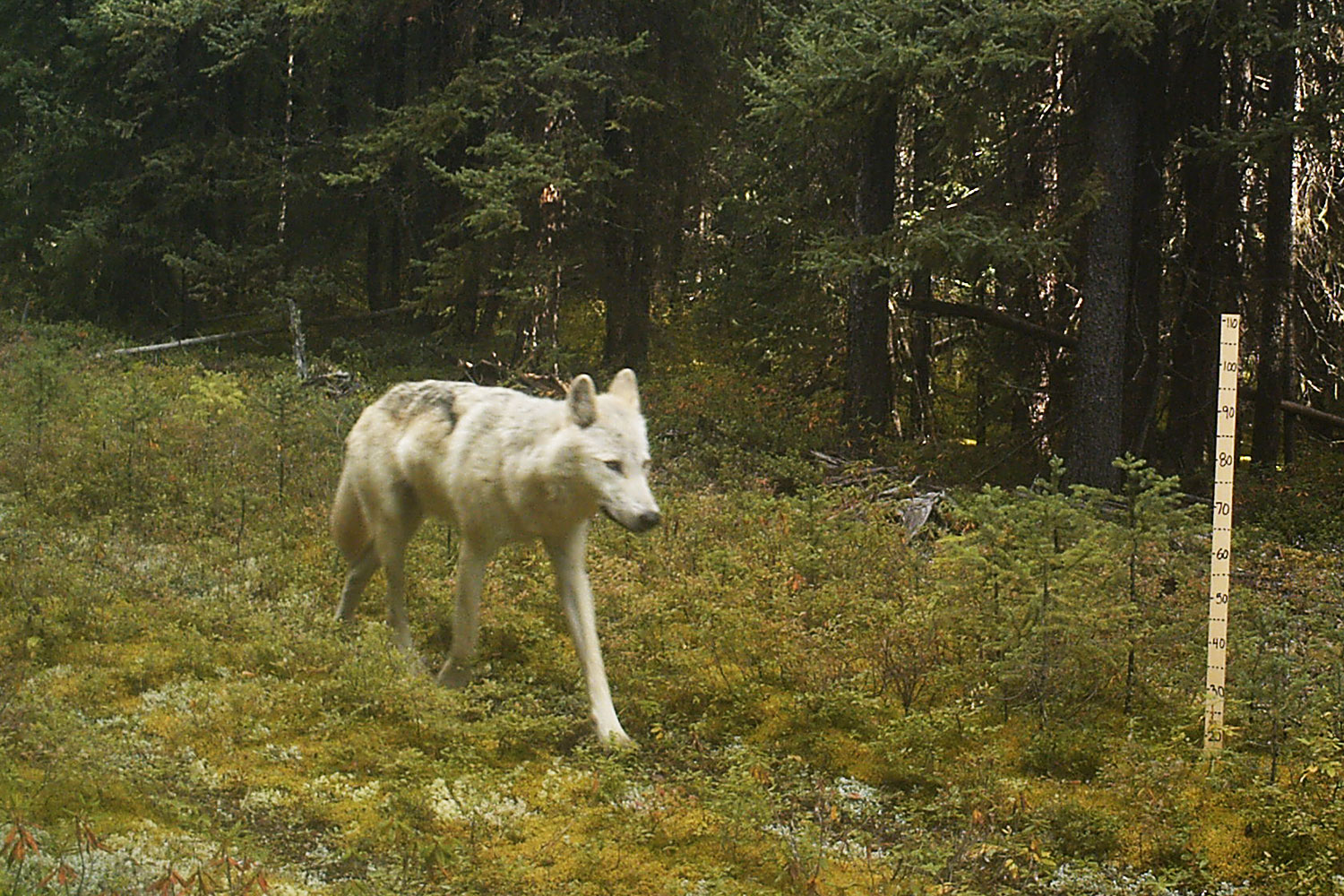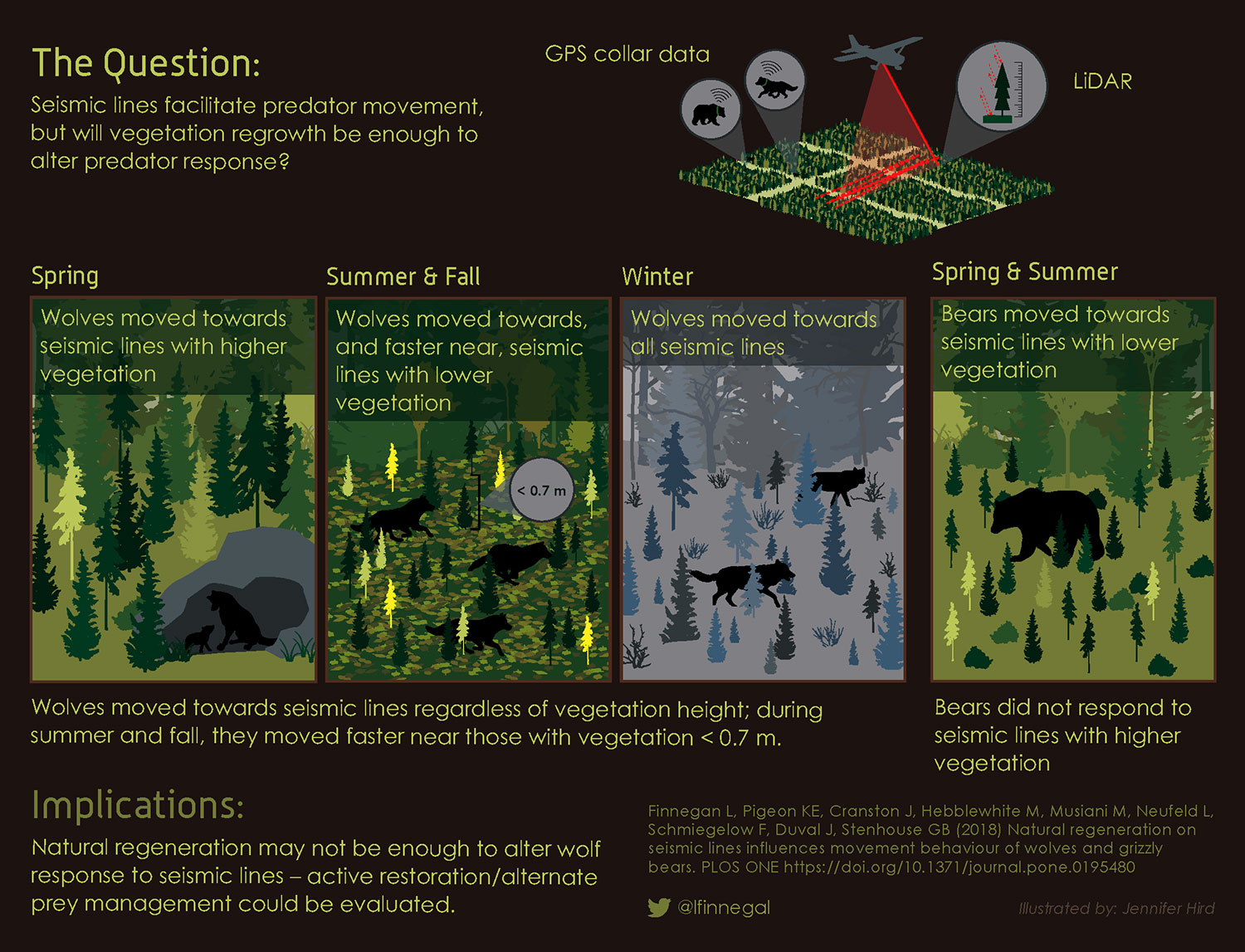
Abstract
Across the boreal forest of Canada, habitat disturbance is the ultimate cause of caribou (Rangifer tarandus caribou) declines. Habitat restoration is a focus of caribou recovery efforts, with a goal to finding ways to reduce predator use of disturbances, and caribou-predator encounters. One of the most pervasive disturbances within caribou ranges in Alberta, Canada are seismic lines cleared for energy exploration. Seismic lines facilitate predator movement, and although vegetation on some seismic lines is regenerating, it remains unknown whether vegetation regrowth is sufficient to alter predator response. We used Light Detection and Ranging (LiDAR) data, and GPS locations, to understand how vegetation and other attributes of seismic lines influence movements of two predators, wolves (Canis lupus) and grizzly bears (Ursus arctos). During winter, wolves moved towards seismic lines regardless of vegetation height, while during spring wolves moved towards seismic lines with higher vegetation. During summer, wolves moved towards seismic lines with lower vegetation and also moved faster near seismic lines with vegetation <0.7 m. Seismic lines with lower vegetation height were preferred by grizzly bears during spring and summer, but there was no relationship between vegetation height and grizzly bear movement rates. These results suggest that wolves use seismic lines for travel during summer, but during winter wolf movements relative to seismic lines could be influenced by factors additional to movement efficiency; potentially enhanced access to areas frequented by ungulate prey. Grizzly bears may be using seismic lines for movement, but could also be using seismic lines as a source of vegetative food or ungulate prey. To reduce wolf movement rate, restoration could focus on seismic lines with vegetation <1 m in height. However our results revealed that seismic lines continue to influence wolf movement behaviour decades after they were built, and even at later stages of regeneration. Therefore it remains unknown at what stage of natural regeneration, if any, wolves cease to respond to seismic lines. To reduce wolf response to seismic lines, active restoration tactics like blocking seismic lines and tree planting, along with management of alternate prey, could be evaluated.
Read the full paper here (open access).
Get a graphical abstract for the paper here.
Citation
Finnegan, L., Pigeon, K. E., Cranston, J., Hebblewhite, M., Musiani, M., Neufeld, L., Schmiegelow, F., Duval, J., & Stenhouse, G. B. (2018). Natural regeneration on seismic lines influences movement behaviour of wolves and grizzly bears. PLoS ONE, 13(4), e0195480. doi:10.1371/journal.pone.0195480







